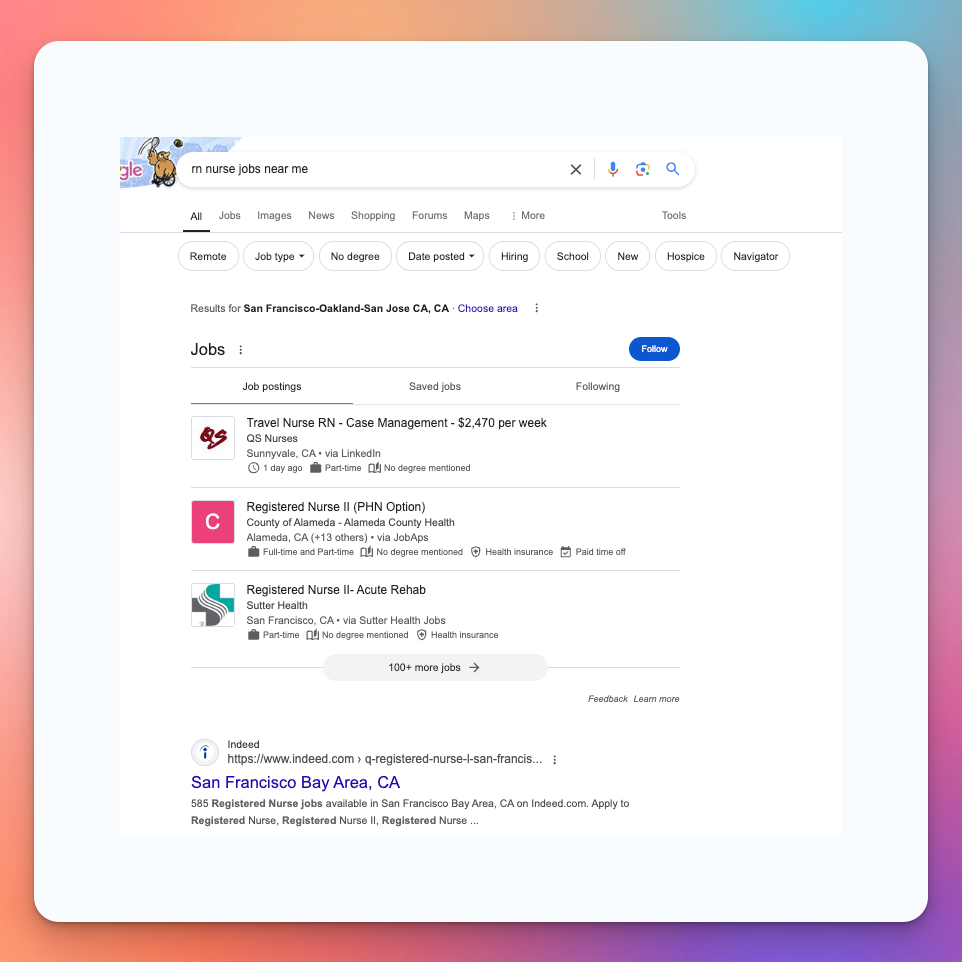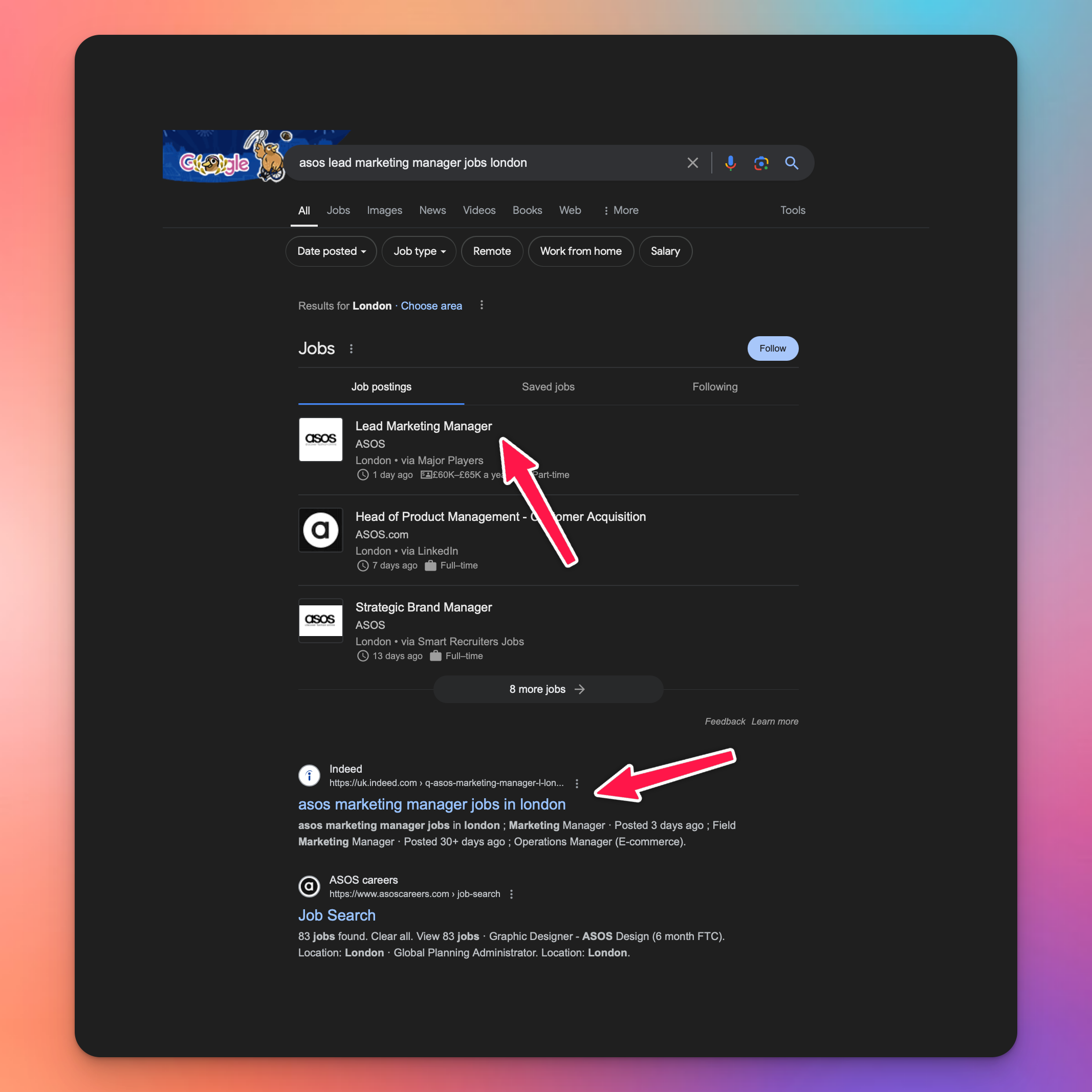The impact of the August 2024 Google Core Update on Online Recruiting Part 1: Introduction
This is my most important post on job boards and ATS SEO this year. The August 2024 Core Update changes to Online Recruiting are fascinating.
This is part 1 of the series. Here are links to Part 2 and Part 3 of the article:
The Impact of the August 2024 Google Core Update on Online Recruiting Part 2: - Deep Dive
The Impact of the August 2024 Google Core Update on Online Recruiting Part 3: - Strategic Meaning
But first, we must cover how organic search works for job seekers to understand all the changes. Grab a coffee (or a beer); this might take a bit.
How do job boards get organic traffic?
First, job boards get organic traffic from one of three main categories of pages:
Google Jobs
When job seekers do a job-related query, Google loads the jobs feature, and when job seekers click on apply, they get redirected to the job ad page of a job board.
Search result landing pages
These are pages that job boards create with lists of jobs to capture search volume. In the example above, Indeed has a search result page for "rn nurse san francisco":

Content
This is a relatively broad category of pages—it can be blog posts or static content like programmatically created pages, such as salary reports or top employers to work for.
Most job boards get their traffic from the second category of pages and Google Jobs traffic.
How does that look on the job seeker side?
Most job seekers start their search on Google. Depending on what they type in the search engine, we differentiate between two types of searches:
- Generic searches can be broad job titles or job categories, like marketing manager in Austin, nurse jobs near me, or company name + jobs.
- Precise searches – this category can be a bit wide, as precise searches can incorporate multiple facets:
- Concrete job title and location – customer support manager jobs near me
- Job title and company – product manager job open
- Job title, company and location – marketing manager job open in New York
Of course, this is not a scientific approach, so some searches always fall between these, like “marketing jobs in COMPANY.” These generic searches with a brand are essential, so remember this example.
Let’s call the searches where companies are mentioned “branded precise searches.” We will talk a lot about these today because this is one of the significant changes.
Going further, let’s discuss what job seekers see when searching for a job.
Usually, the SERP (search result page) that Google creates follows this structure:
- Sponsored links
- Google Jobs SERP feature
- 2-3 Organic results
- People also ask
- Other organic results
- People also search for
- Sponsored results
In the past, Indeed was known to have the most results in positions 1-3, both for generic and precise searches. This is all excellent—Indeed worked hard on SEO to achieve this, but even for branded searches, they would outrank the actual ATS platform of a specific company. There are some pretty good reasons for that—Indeed has company reviews and very detailed employer pages that help them rank for “job + company” searches, or as we call them, “branded” searches.
It is also important to note that most searches, even precise ones, typically trigger a search result landing page in the organic results, rarely an actual job ad page.
One final important point is that when Google Jobs is triggered, there is rarely a search result above the Google Jobs windows. This is very important.
Let’s look at some examples.

Here, I am using a UK VPN to do a search on Google for the following branded precise search:
Exact job title: lead marketing manager
Company: ASOS
Location: London
Notice in the resulting example what I described above:
- The Google Jobs feature is shown first
- Although we have an EXACT job matched for this query, as visible in the Google Jobs results, the first organic result is an Indeed search result page for ASOS marketing manager jobs in London.
- We found a link to the company's career page only after Indeed.
- The first two ASOS results in Google Jobs are from Linkedin, and a staffing agency and only the third job is from the ATS (Smartrecruiters).
This behavior has been standard over the past.
So, what has changed? To be honest, a lot. It is hard to summarize all the changes because Google is still testing different orders, but I have picked a few fascinating examples for ATS platforms and job boards.